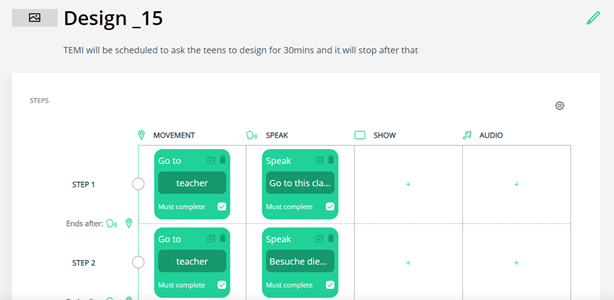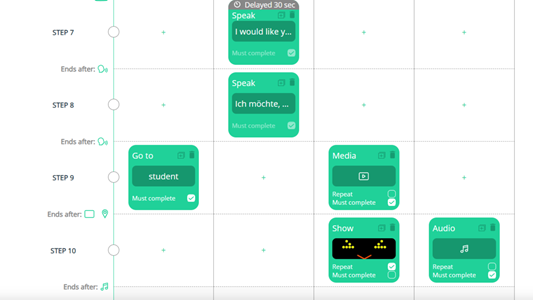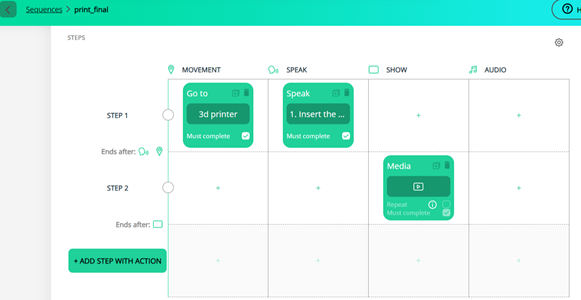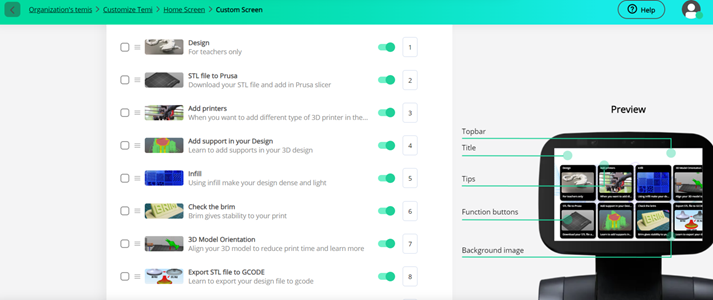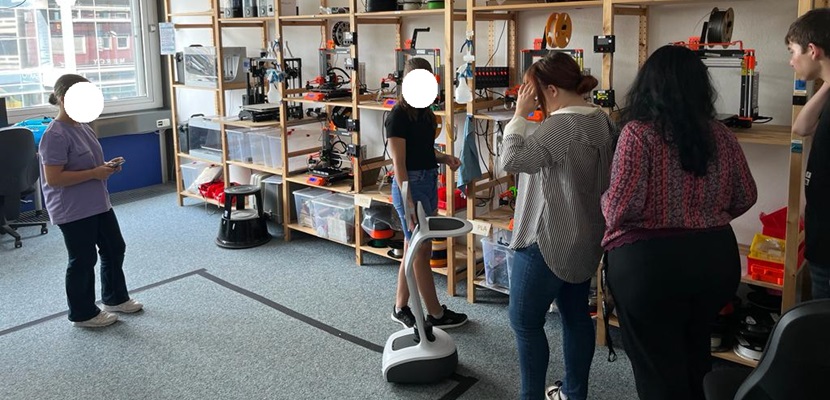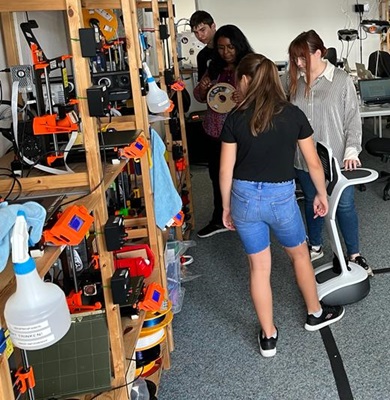EduRobot
Teaching 3D printing and designing in multilingual and intercultural classroom with TEMI robot
UX Research | UX Design | TEMI Programming | Team coordination | Usability testing | Interview analysis
"I asked TEMI about the filament and he started with the instructions and there was text in the screen that I could read and understand it better."
Problem Statement
- Teaching refugee children in multilingual and intercultural environment.
- Shyness of children to speak German or English.
- Always seek for translation from volunteers instead of trying.
- Hands on session every children couldn't get the access of teacher to ask doubts.
| Team Size : 2 |
| Project type : University seminar project |
| Duration : 10 weeks |
| Supervised by : Dr. Rainer Weiching |
| Tools Used : |
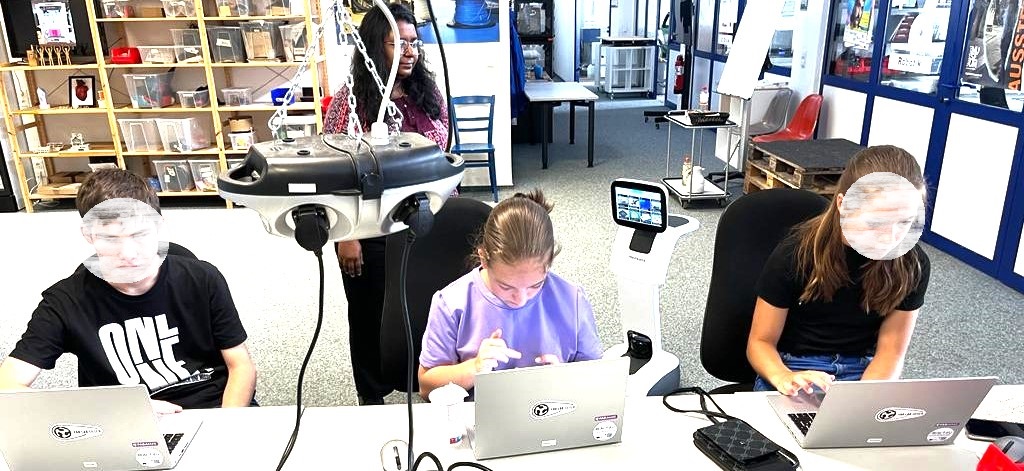
Methodology

Concept Design
- TEMI Facilitates 3D Printing: TEMI assists in slicing 3D STL files using Prusa Slicer software, generating the necessary G-code for 3D printing.
- Assistance with G-code Transfer: Participants receive guidance on transferring the G-code file to an SD card, a crucial step for initiating 3D printing on the machines.
- Operational Support: TEMI aids participants in operating 3D printers, including changing filament and overseeing the printing process, ensuring a smooth experience.
- Safety Measures: TEMI is programmed to enhance safety by monitoring participant proximity to potentially hazardous areas, like the artifact shelf or machines. Through sequence programming, it can alert or prevent access when necessary.
- Multilingual Interaction: TEMI communicates fluently in both English and German, ensuring clear instructions and support for participants in their preferred language.
Storyboarding

Flow Chart
For every idea one flow chart was created before sequencing this helped in visualization and brainstorming best possible strategy.

Prototyping using Sequence Programming in TEMI
Sequence programming in TEMI helps in making user their own way to program robot based on specific needs.
TEMI robot helping participants with 3D printing
Design Workshop
Designed the workshop for an hour with the schedule.
| Planned Time | Activities | Actual Start Time | Remark |
|---|---|---|---|
| 9:30-10:00 | Orientation and Introduction | 11:00-11:30 | There was situation as participants didn't arrive on time |
| 10:00-12:00 | Pre-study interview | 11:30-12:20 | - |
| 12:00-12:15 | Break | 12:20-12:30 | - |
| 12:15-13:45 | Study | 12:30-13:30 | Conducted an hour study |
| 13:45-14:00 | Break | 13:30-13:45 | Pizza break |
| 14:00-16:00 | Post-study interview | 13:45-15:00 | Evaluation Interview |
Participants during the workshop interacting with TEMI robot to solve their assessment in 3D printing
Results and Evaluation
Conducted interview in two different groups
- TEMI as teaching aid "I think it help us (thinking) do something for example work better with 3D printers than without it (230713_0023_alpha_post_interview, p. 1)"
- TEMI to improve language practice " TEMI I can improve my English knowledge so it will be cool. (230713_0023_alpha_post_interview, p. 1)"
- "Yes, she learned a bit of English. (beta, Pos. 103)"
- Likable features of TEMI is like female voice "...female voice is enjoyable. Male voice is less enjoyable. (230713_0023_alpha_post_interview, p. 2)"
- "I asked TEMI about the filament and he started with the instructions and there was text in the screen that I could read and understand it better. (230713_0023_alpha_post_interview, p. 3)"
- "Change to filament I asked only TEMI but, robot can help us by answering our question about the task if there are some question that robot cant answer than a teacher can help us answering it. (230713_0023_alpha_post_interview, p. 3)"
- TEMI robot made teen girls uncomfortable also "That she doesn't understand well, and anyway, it was funny for her, but also a bit uncomfortable. (gamma, Pos. 21)"
- Most teen felt anxiety on trying to interact with TEMI or putting themselves in vulnerable position "she said she always feels a bit anxious when trying something new. (gamma. 122)"
Limitations
- The collaborative interaction was a challenge need to be tackled in itself "... I mean everybody was speaking at once so it(TEMI) can't understand what person say and than goes to another. (230713_0023_alpha_post_interview, p. 1)"
- "It was confusing and I think when somebody says coming to TEMI and while he speaks someone speaks too loudly and TEMI could hear it and say previous information and start saying something new that we don't want to know (230713_0023_alpha_post_interview, p. 1)"
- More simplified language we need with robot because of its sounds and understanding "Anyway, she said that it's better with a teacher because the teacher can explain things a bit more understandably. And when the robot explains things, she said it's a bit like natural science with too many words and so on. (gamma, Pos. 42)"
- Behavioral issues in teens regarding learning new and challenging stuff "No, she said she always feels a bit anxious when trying something new. (postInterview, Pos. 122)"
- Sequence programming could include conditional statements, touch start, pause, and stop sequence could work more better.
- Ability to easily integrate language.
